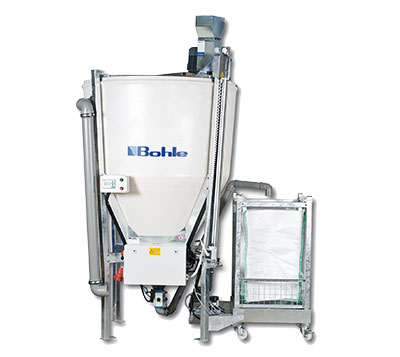
Features
Fabrication
Processing & productivity
The importance of clean water
Stop profits from going down the drain.
February 7, 2014 By Ralf Ackermann
When processing glass with machinery (drilling, grinding, polishing),
glass particles are removed from the glass surface by an abrasive force.
When processing glass with machinery (drilling, grinding, polishing), glass particles are removed from the glass surface by an abrasive force. In most cases, the working area is cooled with water which prevents heat cracks at the glass edges and at the same time flushes the glass particles away. As long as this process is effectively cooling the cutting area, few operators give much thought to the cleanliness of the water, or the benefits of using cleaner water in the process.
 |
|
| Bohle likes the flexibility of decentralized water-cleaning systems that can be easily moved, integrated into larger systems or reconfigured as processes and machinery change. Bottom line: the operator is more likely to use and take care of the machine if it is easy to do so and accessible.
|
Normally, the dirty cooling water is drained into a collecting tank where only coarse particles can settle and thus be filtered. The the water is then circulated back into the cutting machine. As a result, the water gets more and more contaminated the longer the machine is in use. Because of this, it has to be exchanged at regular intervals. With a volume of 400 liters (typical for a straight line edger with eight to 11 spindles) and only a weekly cleaning cycle in a one-shift operation, this not only results in a yearly water consumption of approximately 20,000 liters, but also implies further, significant cost for the disposal of the waste water, depending on regulations in your area.
Clean cooling water further considerable advantages. In combination with coolant, it provides a continuously high grinding and polishing quality and increases the performance of the machine by up to 20 per cent, the service life of the tools by up to 30 per cent, and reliably prevents the cooling water from becoming alkaline. Of course, you can also add coolant to uncleaned water, however, when the water needs to be exchanged, the coolant is discarded at the same time. This can put you afoul of further environmental regulations and incur costs for disposal and replacement coolant.
The ambition to make industrial processes environmentally friendly and reduce costs at the same time leads increasingly to the installation of water cleaning systems. These cannot only be installed in large plants or when new glass processing machines are purchased but can be connected to existing machines without any problem.
In the glass industry, centrifuges or central cleaning stations based on sedimentation are the most commonly used systems to clean the cooling water. The disadvantage of a centrifuge is the high operating cost of electricity, the comparatively high susceptibility to faults, the high maintenance cost and, most importantly, the fact that centrifuges cannot filter glass particles smaller than five microns. In contrast, water cleaning systems based on the principle of sedimentation can filter even the smallest glass particles almost entirely. By adding the correct amount of flocculant, nearly clear water is gained. Even oily residues are removed almost entirely.
Centralized water cleaning systems can be complex to set up and operate. Modern sedimentors, including Bohle’s, have been designed to work in a decentralized configuration at the individual glass processing machine and are therefore more economic to both purchase and operate, less error-prone, more compact and more user-friendly.
In Bohle-style sedimentors, flocculant is added to the grinding water to bind fine glass particles which can then settle to the bottom and be discharged. The glass sludge can usually be disposed of as normal residual waste. Flocculants are available that react exclusively within the sedimentor tank, making the waste water safe for disposal.
Bohle feels cleaning water using the bypass principle is superior to other methods. With this principle, part of the water is taken out of the water circuit, cleaned and fed back into the machine. Bypass cleaning systems can very easily be integrated with already existing glass processing machinery. Also, when planning new glass processing lines, bypass systems require relatively less space and low investment costs. Flocculant does not enter into the machinery circuit and soapy buildup on the tools is practically eliminated.
In in-line cleaning systems, all the cooling water is cleaned as it is circulated. This approach has benefits for some applications, which is why Bohle offers both. Apart from the larger space and investment requirements, the correct dosing of the flocculant in in-line systems is very complex. In-line sedimentation systems can achieve an even lower content of solids in the water, however this is normally not required.
Look for a water cleaning system manufacturer that offers systems for different sizes of glass processing machinery, from basic machines all the way up to cross-linked, double-sided, straight line edgers. Every plant and every project is different, so you need a company that can customize its system for your shop and grow as you grow.
To justify a water cleaning system, look at cost savings on fresh water use, disposal of waste water, cleaning labour and machine idle time. If you can, also consider the impact of better machine performance and longer tool life. A sedimentary water cleaning system should pay for itself in less than a year.
Bohle Sedimentor technology is in successful operation in many medium-sized glass processing companies but also in large enterprises such as Pilkington, Auer Lighting, Velux, Saint-Gobain, and Salgglas Automotive.
Print this page
Leave a Reply